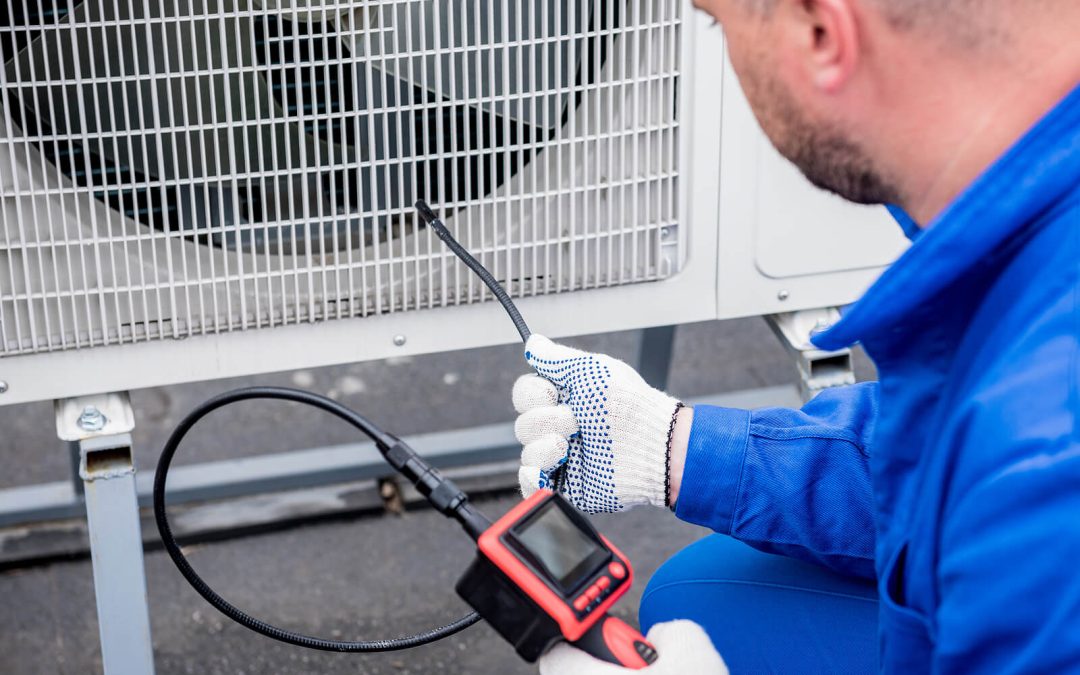What Are HVAC Duct Camera Inspections?
A tiny, high-definition camera is used to visually examine the inside of HVAC ducts during an inspection. A flexible rod carries the camera, enabling it to slide through the ducts and snap high-resolution photos of the inside surfaces. The next step is to examine the photos for problems like dirt, trash, mold, leaks, or damage. A harmless and efficient method of diagnosing and addressing HVAC system problems, HVAC duct camera inspections can give real-time feedback. These inspections can aid in keeping HVAC systems in top shape by giving a clear picture of the ductwork’s interior.
Using HVAC Duct Cameras: The Advantages
An accurate and thorough evaluation of the ductwork’s condition is one of the main advantages of HVAC duct camera examinations. Technicians can find problems like mold, filth, and debris that might hinder the HVAC system’s operation by physically inspecting the inside of the ducts.
Inspections using HVAC duct cameras have the added advantage of revealing any damage or leaks in the ductwork. Energy loss and decreased system efficiency can result from ducting leaks. Technicians can improve the HVAC system’s overall function and stop additional damage from occurring if they catch these problems early.
Effectiveness of HVAC Duct Camera Inspections:
When it comes to determining what’s wrong with an heating, ventilation and air conditioning system, a duct camera inspection is your best bet. These inspections are useful for finding issues that could otherwise go undetected since they give a clear picture of the ductwork’s inside. The capacity to receive immediate feedback is a major benefit of HVAC duct camera examinations.
As the camera moves through the ducts, professionals can view real-time photos of the inside surfaces, which helps them find and fix problems faster. Also, there is no need to severely damage the building or HVAC system because HVAC duct camera examinations are non-invasive. Their efficiency and effectiveness in identifying and fixing HVAC system problems make them a great choice.
Issues Found Frequently Through Inspections of HVAC Ducts:
There are many potential problems that might impact the efficiency of heating, ventilation and air conditioning systems, and duct camera examinations can reveal them all. The following are examples of problems that these inspections often find:
- Dirt And Debris Buildup: The accumulation of dust, filth, and other material in the ductwork can diminish airflow and system performance as time goes on. In order to clean the ducts successfully, staff might use HVAC duct camera inspections to determine the level of the accumulation.
- The Development Of Mold And Mildew: When there is excess moisture in the ductwork, these organisms can flourish, lowering the quality of the air within and even posing health hazards to those inside.
- Damage And Leaks: Ductwork can sustain damage and leaks over time, resulting in energy loss and diminished system performance. HVAC duct camera inspections can detect mold growth areas, allowing for quick remediation. In order to fix these issues and get the system running again, HVAC duct camera inspections are a great tool to have on hand.
Possible Obstacles and Restriction:
There are a few restrictions to keep in mind while using HVAC duct camera examinations, despite its great effectiveness. Gaining access to all parts of the ductwork is a major challenge. Ductwork might be in inconvenient places, or the camera might not be able to get very far. If this is the case, the specialists evaluating the ductwork may have had to switch to using non-standard inspection techniques or equipment.
The fact that HVAC duct camera inspections can only give a visual evaluation of the ducting is another constraint. Although this usually does a good job of spotting common problems like grime, mold, and debris, it could miss more complicated problems like airflow constraints or mechanical damage. When this happens, it can be necessary to use supplementary diagnostic equipment to get a better picture of the HVAC system’s health.
Best Practices for HVAC Duct Camera Inspections:
Following best procedures will guarantee that HVAC duct camera inspections are effective. Among the most important things to do is:
- Make Use Of First-Rate Cameras: Taking pictures of the inside of the ducts in great detail requires high-definition cameras. It can be challenging to effectively detect faults when using low-quality cameras due to poor image quality.
- Before The Examination, Clean The Ducts: To ensure that the camera can see well during the inspection, it is a good idea to clean the ducts beforehand. As a result, the examination can be more precise and problems can be more accurately discovered.
- Check Everything On A Regular Basis: Having your HVAC ducts inspected with a camera on a regular basis might help catch problems before they get worse. Make it a point to check the ducts once a year, or more often if you have certain performance-related concerns.
- Keep Track Of Results: The results of HVAC duct camera inspections, if recorded, can reveal the ductwork’s condition over time. Finding patterns and making educated judgments on repairs and maintenance can be aided by this data.
When it comes to keeping and increasing the performance of HVAC systems, duct camera inspections are a powerful tool. These inspections can find many problems that impact system operation since they show the inside of the ducts in great detail. Although there are a few drawbacks, like difficulty gaining access and not being able to detect complicated problems, HVAC duct camera inspections are still a great way to make sure your system works well and lasts a long time.

